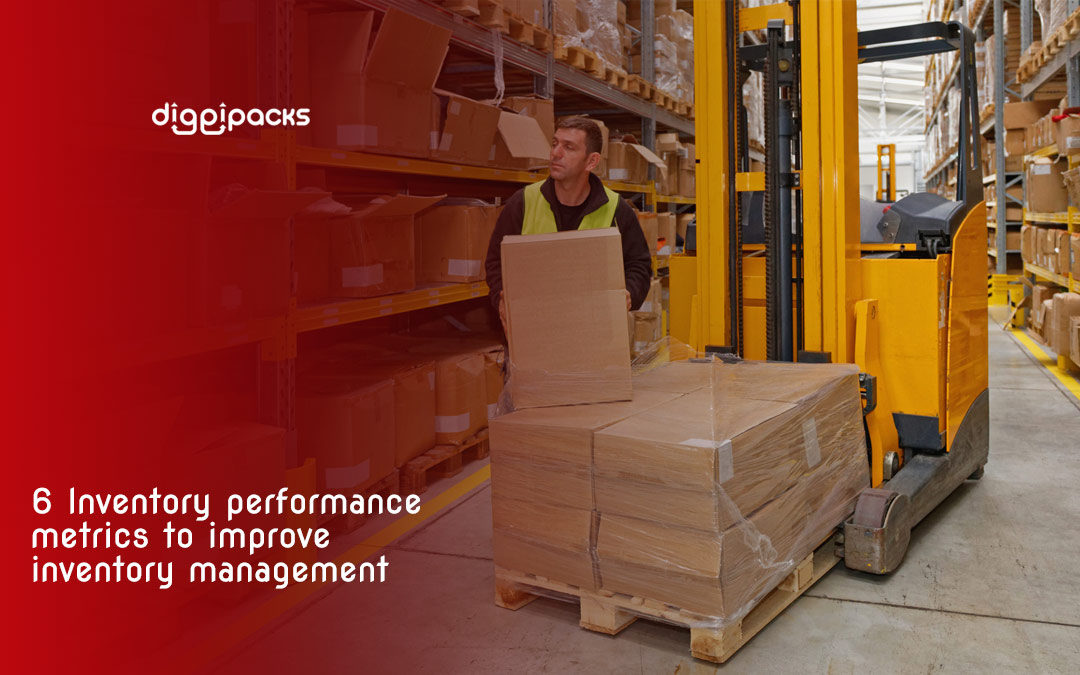Good Inventory Performance is the most important point for successfully managing any business, as many seek to achieve good inventory management but face a large number of problems that may cause them huge losses, but by measuring and monitoring Inventory Performance on an ongoing basis, merchants will be able to avoid problems that may It results in a loss of customer confidence or lack of profits, and thus negatively affects your business, and there are a set of important inventory performance metrics that will help you effectively in improving your inventory performance, and in this article we will show you the most important inventory performance metrics that you should use.
What to consider when selecting Inventory Performance metrics

There are a number of important things to consider when choosing stock performance metrics, as each indicator you include in your business will clearly impact all of your operations.
Therefore, you need to choose inventory performance metrics that synergize your employees and help them achieve the end goal, so you can achieve your organization’s goals in an orderly fashion.
You also need to make inventory performance metrics measurable, specific, and relevant to your goals to achieve them in a timely manner.
Avoid inventory performance metrics that will not improve your inventory performance. You will also need to use an easy-to-use and customizable inventory software to be able to measure and track inventory performance metrics effectively and periodically.
Here are some of the most important inventory performance metrics that you will need in your business:
Inventory Turnover Ratio
Inventory turnover is the number of times inventory has been sold and replenished during a specified period of time. High inventory turnover is an indicator of good efficiency and good management.
As for its low, it indicates the slow movement of sales and your need to conduct a comprehensive assessment of your business to find out the weaknesses and correct them. The inventory turnover rate is calculated as follows:
- Inventory Turnover Ratio = Cost of goods sold ÷ average inventory
Demand forecasting accuracy
It is one of the important Inventory Performance Indicators as it will enable you to fill in any unexpected gaps, as well as understand demand forecast and compare it to your actual level.
This is one of the important elements of effective inventory control, it will give you accuracy about inventory as well as quick response to any changes, thus growing your business quickly.
Perfect order performance
This indicator helps you determine the effectiveness of your order placement, in terms of speed and accuracy of delivery options, and with significant improvements in manufacturing intelligence, your perfect order performance will increase exponentially.
Perfect order performance includes a number of sub-indicators, such as the rate of fulfilling orders on time, the rate of completed orders, as well as the rate of intact orders without damage.
Customer satisfaction
Another useful Inventory Performance Indicator is the Customer Satisfaction Index, which is measured using net promoter scores or NPS.
Through it, customer satisfaction levels are checked and evaluated by determining the degree of NPS, which helps the company in checking the times of customer orders from beginning to delivery of the order.
Order cycle time
Which measures the average time taken to fulfill orders, from the customer’s order to the full arrival of the order to the customer,
and helps the company determine the effectiveness of its inventory management processes. Therefore, it is an important indicator of Inventory Performance.
The companies that have a high order cycle time, this is a sign of the dissatisfaction of their customers, and therefore they lose competition with others.
But if the company has a low order cycle time, this means that it fulfills the demands quickly, which contributes to:
- Achieve customer satisfaction.
- Give it a stronger competitive advantage.
- Grow quickly.
Carrying costs of inventory
This indicator is one of the most important indicators of measuring inventory performance, which reflects your management of inventory and expenses.
Carrying costs of inventory measures the expenses that were spent on goods while they are stored.
The rise in this indicator indicates poor planning in the types and quantities of goods you have purchased;
It may mean that you buy goods that are not popular or demanded by the public, or that you buy quantities that exceed your selling levels,
Which causes the goods to stay for a longer time in your stores, and thus the high cost of storing them.
If the situation is not remedied, the costs of buying and holding the goods may exceed their selling value,
Which means that you choose the goods that cause a loss, and you can calculate the Inventory Carrying Cost as follows:
- Inventory Carrying Cost = Total Inventory Value ÷ total inventory Costs
Inventory Management Software Can Help you in Inventory Performance

Inventory management software can effectively help you improve your Inventory performance, by giving you accurate information and tracking all inventory purchases and uses.
You can also, through inventory management software, issue purchase orders automatically without the need for manual work.
Thus, through inventory management software, you can provide a unified database that is easily accessible and therefore accurate in measuring inventory flow using appropriate inventory management metrics.
Diggipacks provides you with the best inventory management software, which relies on the latest methods and technology.
That enables you to update products at the maximum speed as well as move inventory from one place to another with ease and ease.
In addition to informing you periodically of the movement of your inventory, determining the necessary spaces for storing it without any human intervention.

Recent Comments